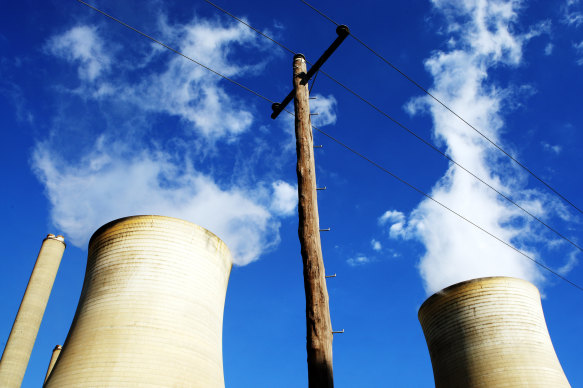This was published 1 year ago
Opinion
Safeguard mechanism will help Australia achieve climate targets
Alison Reeve
Climate Change and Energy Deputy Program Director at Grattan InstituteThe safeguard mechanism is the policy you’ve probably never heard of. But it’s about to become an important tool in achieving Australia’s climate targets.
The safeguard mechanism has been in place since 2016, and caps the emissions of Australia’s 215 largest polluters. If they breach their caps they have to buy a “carbon offset” to compensate. To date the caps have been set so high that they’ve had no constraining effect on emissions. But now, the caps are coming down, as part of the Albanese government’s strategy to get to net zero.

Prime Minister Anthony Albanese.Credit: AAP
From July 1 this year, large industrial facilities will have to cut their emissions by 4.9 per cent each year to stay under their caps. Businesses that do better than this will receive credits, which they can save for future years or sell to others who are in danger of breaching their caps. Any new industrial facilities will have to be built to international best practice, and there are allowances to maintain competitiveness for trade-exposed businesses.
Some businesses will have easy options to stay under their caps, like switching from gas to electricity in their factories; or improving the efficiency of their operations (saving money in the process). Others will find it harder: many are waiting for new technology to become commercial later this decade, so buying credits or offsets will be their only option in the short term.
If you think this sounds like a carbon price, you’re right. The objective is to force a choice on businesses: adjust operations to pollute less, or pay in order to do so. The key difference between the safeguard and a carbon tax is who gets paid. Under a carbon tax, it’s the government who collects the payments. Under the safeguard, businesses pay each other.
If it works as planned, industrial emissions will fall by 43 million tonnes in 2030. But there are a couple of potential risks.

The key difference between the safeguard and a carbon tax is who gets paid.Credit: Jessica Shapiro
Firstly, new industrial facilities may be built, and their emissions will add to the national total. The government is requiring new facilities to be built to international best practice, and to reduce their emissions by 4.9 per cent each year as well. Provided a rigorous definition of “best practice” can be agreed on (and this will be contested), this should keep additional emissions from new facilities to a minimum.
Some have suggested the solution to the above is to force new facilities to offset 100 per cent of their emissions. This won’t work. Why make it harder for newer, more efficient facilities to replace older ones, by forcing an extra cost on them? It would be more sensible to tighten up the definition of “best practice”, and increase the decline rate slightly for older facilities.
The second risk is that companies will choose to keep buying offsets rather than adjusting their operations to lower their emissions. This risk is real, but concerns are exaggerated. Offsets will get more scarce and more expensive as time goes on A company that took this route would quickly find they’ve signed up for a perpetual, growing drag on profits. And this is a carbon catch-22: they can’t stop buying offsets because they won’t be competitive with other low-carbon businesses, but the more they keep offsetting, the less competitive they’ll be.
So should the government put a limit on the use of offsets? Some companies genuinely have no choice but to offset:they are waiting for cleaner technology to be developed. As well, there could be cheaper sources of emissions reductions in areas of the economy outside the safeguard. Why not do the quick, easy, cheap things while we wait for new technology to flow through? And if there really are lazy companies who will just pay to offset forever rather than adjust their operations, shareholders will soon ask sharp question about where their profits are.
None of this is to say the safeguard is perfect. No company will be paying for the damage they’ve already inflicted on the climate, nor will they be paying the full cost of all their emissions. But currently, industrial emissions are rising. Both sides of politics have ruled out carbon taxes or emissions trading. The cost shouldn’t all fall on taxpayers, especially not in a time of rising inflation and high budget deficits. Reforming the safeguard will force the industrial sector to start its multi-decade transformation to flourishing in a net-zero global economy.
To date, Australia has achieved its emissions targets by avoiding land clearing, and by cleaning up the electricity sector. The burden of the first was carried by farmers, the second was paid for by you and I through our electricity bills and our rooftop solar systems. It’s time for the industrial sector to do its share, and the safeguard is the tool we have at our disposal.
The Opinion newsletter is a weekly wrap of views that will challenge, champion and inform your own. Sign up here.